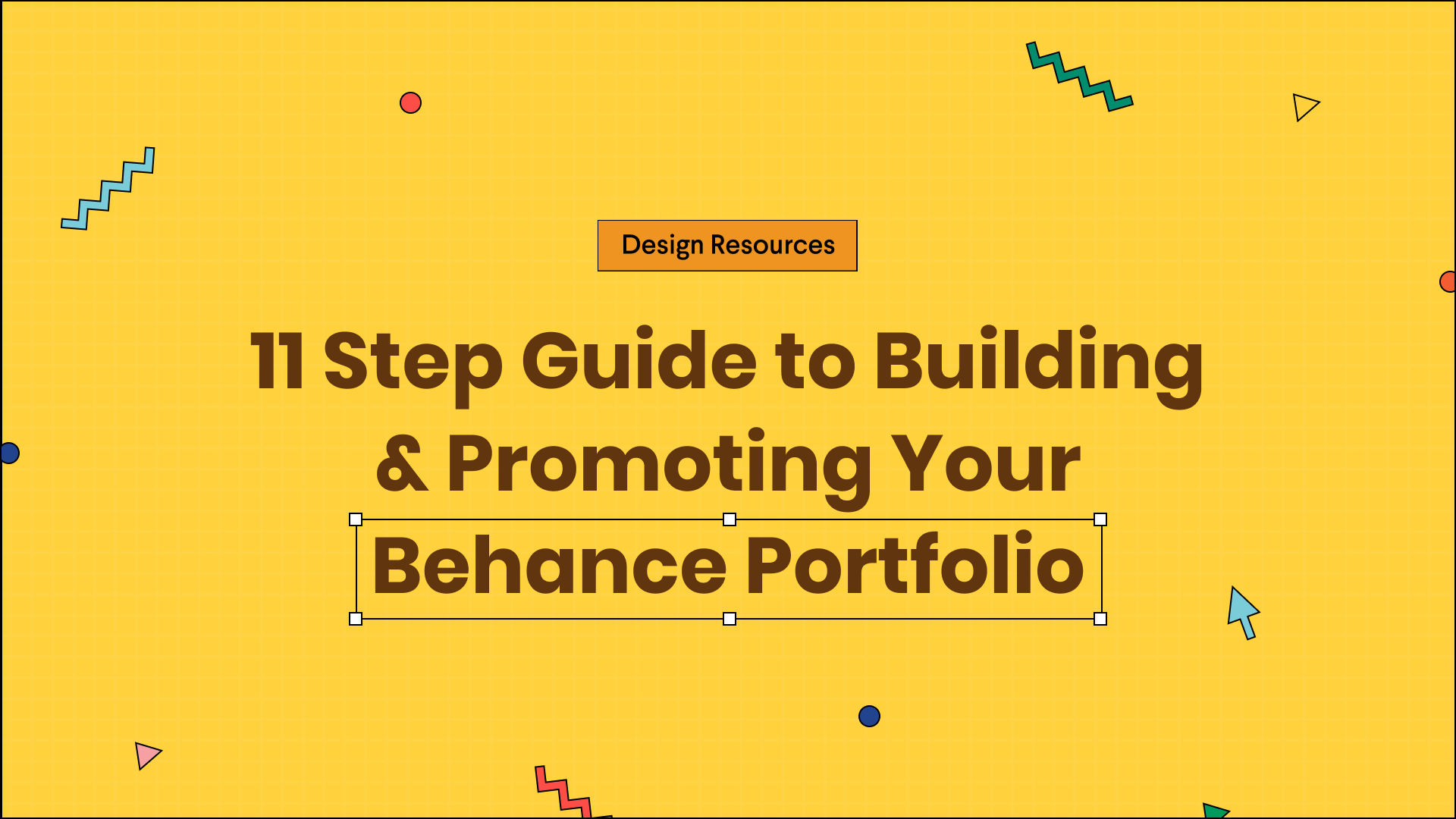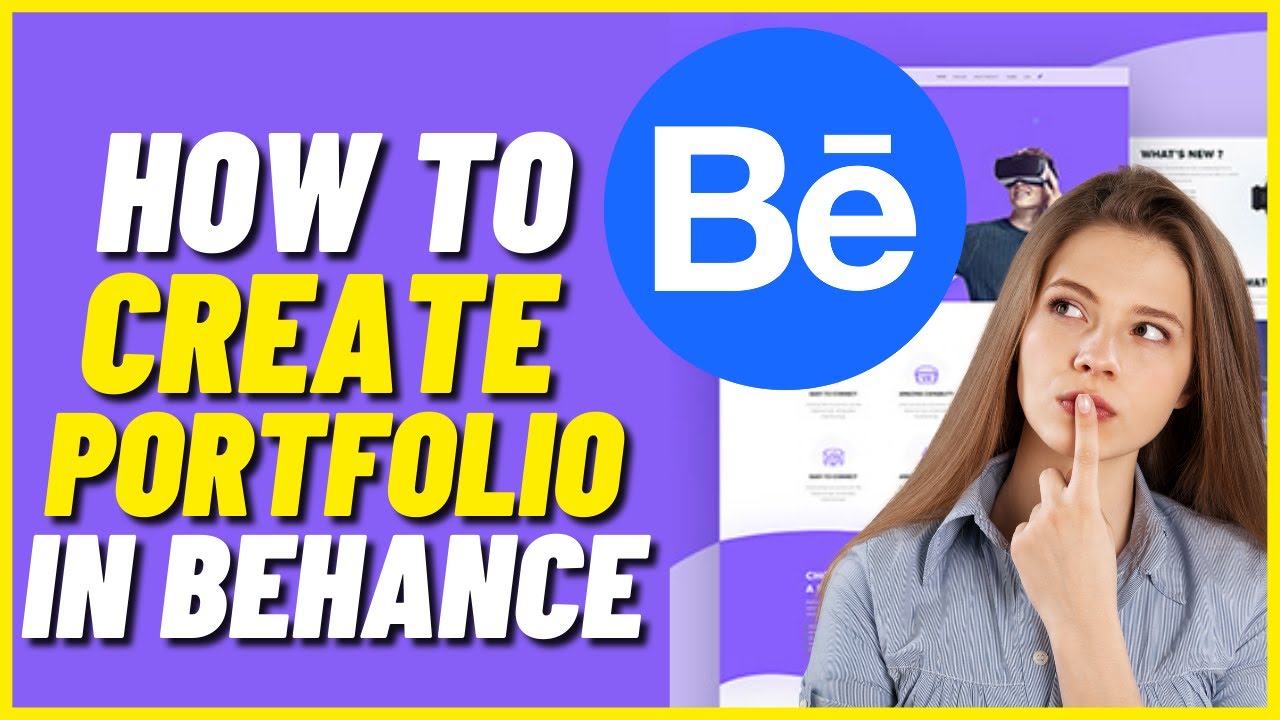In the world of digital portfolios, showcasing your creativity effectively is crucial. Behance is an incredible platform where designers, artists, and creatives can display their work, and one of the most impactful ways to elevate your portfolio is by embedding videos. Whether you're a graphic designer, an animator, or a photographer, videos can breathe life into your projects, allowing potential clients and collaborators to engage with your work on a deeper level. In this guide, we will explore the importance of incorporating videos into your Behance portfolio and how you can do it seamlessly.
Why Embed Videos in Your Behance Portfolio?

Integrating videos into your Behance portfolio comes with a myriad of benefits that can significantly enhance the overall presentation of your work. Here are some compelling reasons to consider embedding videos:
- Enhanced Engagement: Videos naturally attract more attention compared to static images. They can keep viewers on your profile longer, giving them a better chance to connect with your work.
- Showcase Process: Videos allow you to show your creative process. A behind-the-scenes look at how you create your art can add depth and context to your projects.
- Demonstrate Skills: Whether it's a design in motion or an animation, videos can effectively demonstrate your skills and technical capabilities in real time.
- Storytelling: You can tell a story through your videos that static images often can't convey. This helps potential clients and employers understand your vision and the narrative behind your work.
- Diverse Presentation: Videos provide a dynamic alternative to images. Mixing formats can make your portfolio visually interesting and engaging, catering to different types of viewers.
In summary, embedding videos in your Behance portfolio not only enhances the visual appeal but also provides a multi-dimensional view of your work that can captivate your audience. As we dive further into this guide, we'll cover the technical aspects of embedding videos, along with some best practices to ensure your portfolio stands out.
Also Read This: Understanding Adobe’s Marketing Strategies for Adobe Stock
Supported Video Formats for Behance

When it comes to embedding videos in your Behance portfolio, understanding the supported video formats is crucial for ensuring that your content looks great and functions properly. Behance allows specific formats to ensure compatibility across various devices and browsers. Here's a quick rundown:
- MP4: This is the most widely supported format and is ideal for web use. It offers a great balance between quality and file size.
- WEBM: This format is also supported and provides high-quality video with smaller file sizes, making it a favorable choice.
- OGV: Though less common, OGV files are accepted and work well if you're focusing on compatibility with Firefox browsers.
Additionally, Behance has specific guidelines regarding the codecs used in your videos:
- Video Codec: H.264 is recommended for MP4 and WEBM videos.
- Audio Codec: AAC is the preferred audio codec to accompany your videos.
By sticking to these formats and guidelines, you ensure that your videos play smoothly across all devices and provide a seamless viewing experience for your audience. If you're unsure about the format of your video, consider converting it to MP4 to simplify the process!
Also Read This: How to Increase Likes on Behance: Tips for Gaining More Engagement on Your Projects
Step-by-Step Guide to Embedding Videos

Embedding videos in your Behance portfolio is a straightforward process that can greatly enhance your project presentation. Follow these simple steps to get started:
- Upload Your Video: First, you need to upload your video to a video hosting service like YouTube or Vimeo. This is where your video will live before being embedded.
- Copy the Embed Code: Once your video is uploaded, navigate to the video on the hosting site. Look for the “Share” or “Embed” option, and copy the provided HTML embed code.
- Create a New Project on Behance: Log into your Behance account, and click on “Create a Project.” Add your project title and any relevant project information.
- Embed the Video: In the project editor, paste the embed code where you want the video to appear. You can usually do this in the text editor section.
- Preview Your Project: After embedding the code, preview your project to ensure everything looks just right. Adjust the placement as needed.
- Publish Your Project: Once you're satisfied, hit the “Publish” button and share your stunning work with the world!
And there you have it! Now you know how to effectively embed videos in your Behance portfolio, making your projects more engaging and interactive. Happy showcasing!
Also Read This: How to Embed Video on Behance to Showcase Your Creative Work
5. Using YouTube and Vimeo Links
Embedding videos into your Behance portfolio can significantly enhance your project presentations. One of the most popular ways to do this is by using platforms like YouTube and Vimeo. These platforms not only host your videos but also provide easy embedding features that let you integrate them seamlessly into your Behance projects. Here’s how to go about it:
Step 1: Go to the video you want to embed on either YouTube or Vimeo. Look for the 'Share' button, typically found below the video.
Step 2: Click on 'Embed' and you’ll see a snippet of HTML code. Copy this code.
Step 3: Head over to your Behance project editor. There should be an option to add an embed link or HTML code.
Step 4: Paste the code you copied from YouTube or Vimeo into the appropriate section of your Behance project.
And voila! Your video should now be embedded in your portfolio. Here are some benefits of using these video platforms:
- High Compatibility: Both YouTube and Vimeo are widely used, ensuring your video can be viewed on nearly all devices.
- Quality Control: These platforms automatically adjust video quality based on the viewer’s internet connection.
- Analytics: Gain insights about who is watching your video and how they interact with it.
Remember to consider your audience—choose the platform that best suits your project's needs and your personal style.
Also Read This: How to Create Animation for Behance Portfolio: Adding Motion to Your Portfolio Projects
6. Optimizing Video Quality for Your Portfolio
When incorporating videos into your Behance portfolio, quality matters. A great video can effectively showcase your work, whereas poor quality can detract from it. Here are some tips to ensure your video is optimized for the best performance:
1. Choose the Right Resolution: Ideally, aim for a resolution of at least 1080p. This ensures clear visuals and professional quality.
2. Use Proper Compression: Large file sizes can slow down loading. Tools like HandBrake or Adobe Media Encoder allow you to compress videos without losing quality.
3. Check Your Frame Rate: Aim for 30 frames per second (fps) for smooth playback. If you’re working with fast-moving visuals, consider going up to 60 fps.
4. Optimize Audio Quality: Clear audio is just as important as video quality. Ensure your audio is well mixed and consider using formats like .mp3 or .aac, which optimize sound quality.
5. Preview Via Multiple Devices: Before finalizing, preview your video on desktop and mobile devices to see how it appears across different screens.
| Aspect | Recommendation |
|---|---|
| Resolution | At least 1080p |
| Compression | Use tools like HandBrake |
| Frame Rate | 30 fps is ideal |
| Audio Format | .mp3 or .aac |
By following these optimization tips, you can present your videos with clarity and professionalism, elevating the overall impact of your Behance portfolio.
Also Read This: The Best Strategies to Promote Your Behance Post and Attract More Viewers
Common Issues and Troubleshooting Tips
Embedding videos into your Behance portfolio should be a smooth process, but sometimes things can go awry. Whether it’s a technical glitch or a simple oversight, understanding common issues can save you time and frustration. Here are some of the most frequently encountered problems and how to solve them.
- Video Not Playing: If your video won’t play on Behance, the first step is to ensure the video link is properly formatted. Check your embed code for any missing elements. If you’re using a directly uploaded file, make sure it’s fully processed and not set to private.
- Format Compatibility: Behance supports various types of video files and links. Ensure your video is in a compatible format, such as MP4 or AVI. If you're using an external site like YouTube or Vimeo, double-check that the link is correct and that the video is public.
- Slow Loading Times: Heavy video files can slow down your portfolio. Try compressing your video before uploading it, or consider shortening its runtime. Tools like HandBrake can help you compress videos without losing quality.
- Responsive Design Issues: Sometimes, videos don’t scale well on different devices. To ensure your videos are responsive, check Behance's formatting options for embedding, or apply custom CSS to adjust the video size appropriately.
- Playback Controls Missing: If your playback controls aren’t appearing, verify that you’ve included all necessary parameters in your embed code. Try switching to different browsers to check if the issue is browser-specific.
By keeping these common issues in mind, you can troubleshoot effectively and keep your Behance portfolio looking professional!
Conclusion
Embedding videos in your Behance portfolio is a strategically powerful way to showcase your creative work. It adds depth and dynamism to your projects, allowing potential clients or collaborators to engage more fully with your content. Remember, it’s not just about slapping a video on your page; It’s about enhancing your storytelling.
Before diving in, consider the following key takeaways:
- Understand Your Audience: Tailor your videos to the preferences and interests of your viewers. This will ensure they resonate and leave a lasting impact.
- Keep Quality in Mind: Invest time in producing high-quality video content, as it reflects your professionalism and attention to detail.
- Test for Functionality: Always double-check your embedded videos to ensure they play seamlessly across different devices.
- Optimize for Performance: Pay close attention to file sizes and loading times to avoid frustrating potential viewers.
In conclusion, with the right approach and attention to detail, embedding videos in your Behance portfolio can significantly enhance your profile, making your work stand out in an increasingly visual world. So get creative, experiment with your videos, and don’t forget to showcase your personality! Happy embedding!
 admin
admin








